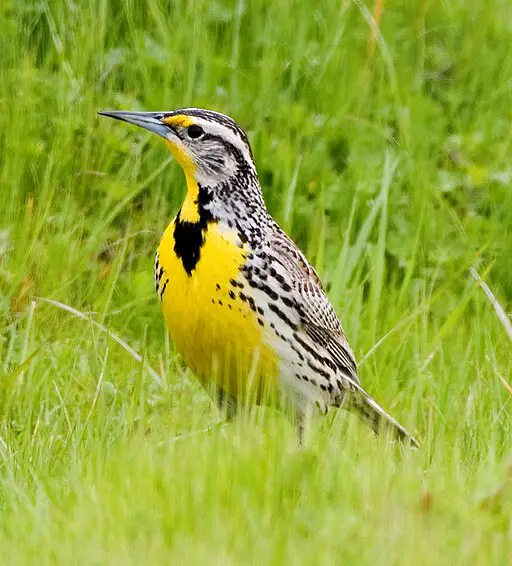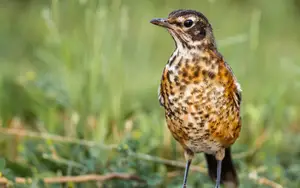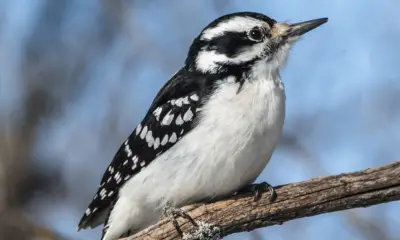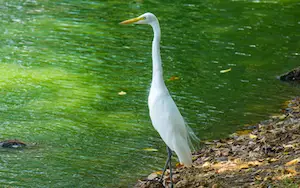21 Types Of YELLOW Birds In Colorado (ID Guide With Photos)
Did you recently come across a yellow bird in Colorado, and want to know what species it was?
Identifying yellow-colored birds in Colorado is not as easy as it might seem, since there are many species of birds in the Centennial State that are either entirely or partially yellow.
To help you identify the bird you saw, we’ll cover the most common yellow birds of Colorado in this article.
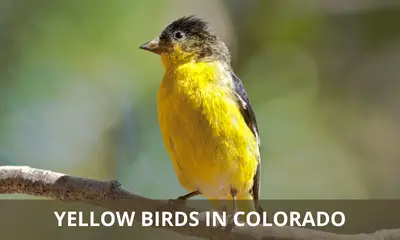
What are the types of yellow birds in Colorado?
The 21 types of yellow birds found in Colorado are:
- Lesser Goldfinch
- American Goldfinch
- Yellow Warbler
- Wilson’s Warbler
- Yellow-rumped warbler
- Common Yellowthroat
- Yellow-breasted Chat
- Western Meadowlark
- Summer Tanager (Female)
- Western Tanager (Female)
- Nashville Warbler
- Yellow-headed Blackbird
- Townsend’s Warbler
- American Redstart (Female)
- Cedar Waxwing
- Orange-crowned Warbler
- Western Kingbird
- Scott’s Oriole
- Orchard Oriole (Female)
- Evening Grosbeak
- MacGillivray’s Warbler
While many of these birds are commonly spotted in Colorado all year round, a number of them only occur in the state only during the breeding season in summer.
Yet other birds are common winter visitors in Colorado, and a few are vagrants that only rarely occur in the state.
Now let’s dive into the details, and take a closer look at each of these bird species:
Lesser Goldfinch
Scientific name: Spinus psaltria
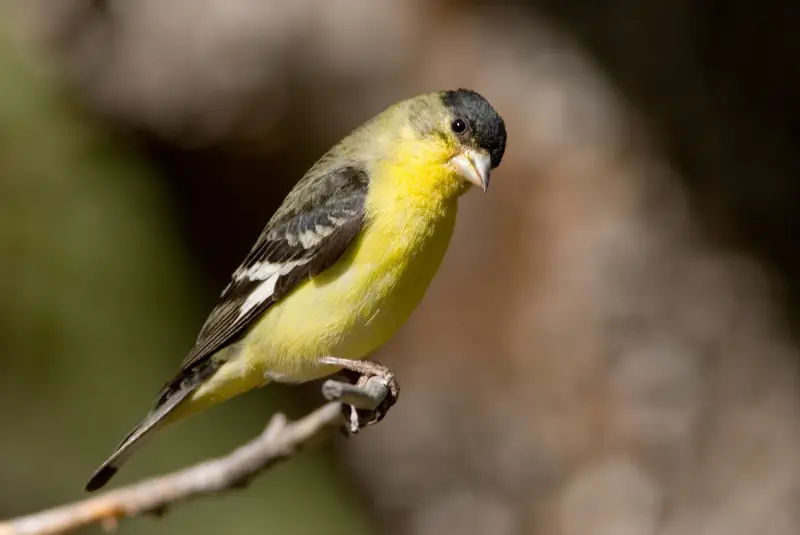
The Lesser Goldfinch is a common bird in Colorado, and breeds in a broad swath across the southern half of the state.
Adult males have a black cap and black wings, which contrast with bright yellow underparts. Their black wings have a white stripe, which is most obvious in flight.
This is the most common yellow-colored bird found in Colorado
Females and juveniles are olive green, with lighter underparts and dark wings with a white wing bar.
The Lesser Goldfinch is a summer visitor in Colorado, and outside of the breeding season it migrates to more southern states and Mexico.
American Goldfinch
Scientific name: Spinus tristis
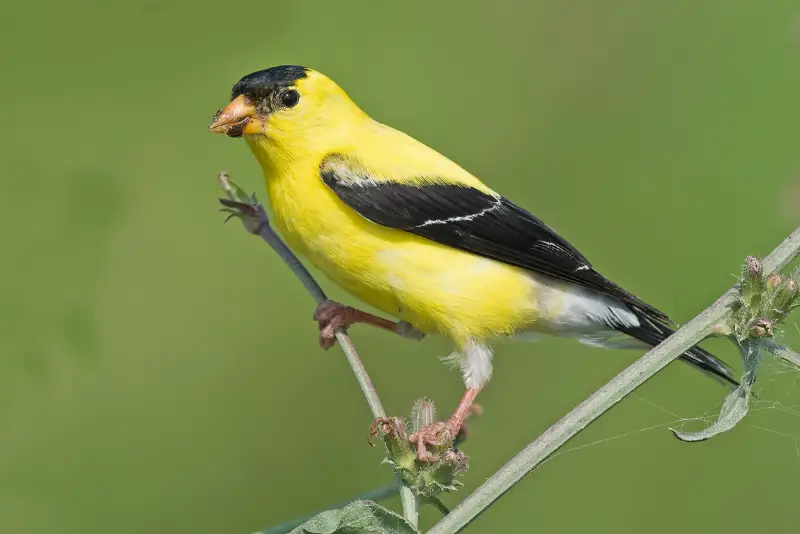
The American Goldfinch is a breeding bird in northeastern Colorado, and a winter visitor in the rest of the state (where it can be seen between October and April).
Adult males have a dazzling, bright yellow color with a black forehead, while their wings are black and decorated with white markings.
The females are a bit quite different though, having a primary olive color and dull yellow underparts that are a lot paler than the male’s.
The American Goldfinch is usually found in weedy fields and floodplains, but can also be found in orchards, roadsides, and as backyard birds.
It generally likes to eat seeds and grains, and is readily attracted to bird feeders that offer black oil sunflower seeds.
Yellow Warbler
Scientific name: Setophaga petechia
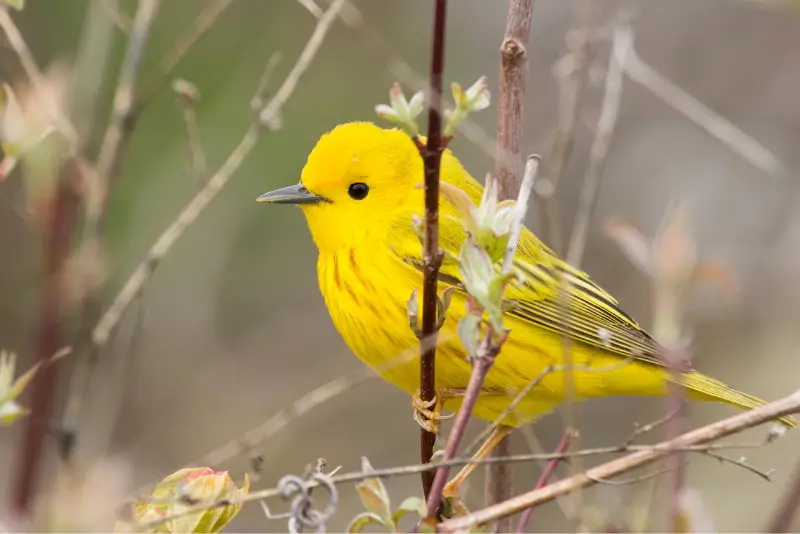
Also known as the American Yellow Warbler, this songbird lives up to its name.
Adult males have a brilliant yellow color, except for their wings, which are just slightly darker and have two pale wingbars.
They also have reddish stripes on the breast and the yellow sides. Adult females are very similar to the males, but have less black streaking and are thus more uniformly yellow.
These bright yellow birds are summer visitors in Colorado during the months from May to late August.
This species is found in open habitat with low thickets and scrubland, which makes it easy to observe.
Wilson’s Warbler
Scientific name: Cardellina pusilla
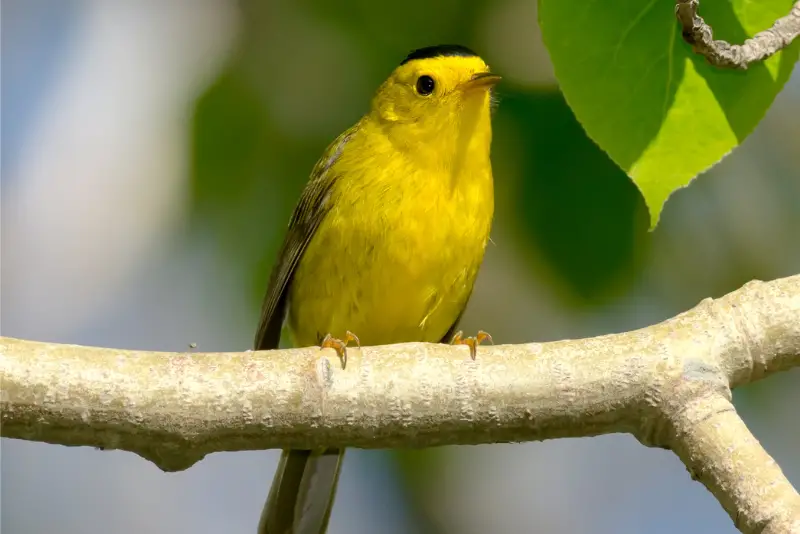
Wilson’s Warbler is a small bird with olive colored upperparts and yellowish green underparts. Adult males also have a black crown.
This warbler breeds in the central areas of Colorado, and is also spotted throughout the state as a visitor during spring and fall migration, as it passes through Colorado from its breeding grounds in Canada to its wintering grounds in Central America.
It prefers damp woodlands with dense shrubs, where it forages for small insects and other invertebrates.
Yellow-rumped Warbler
Scientific name: Setophaga coronata

While the sexes of the Yellow-rumped Warbler are dissimilar, they both have a bright yellow rump.
This warbler exists in several variations, and the eastern population that can be found in Colorado are also called “Myrtle Warblers”.
These small Colorado birds have blueish-gray upperparts with dark streaks, as well as a yellow rump and flanks.
The Yellow-rumped Warbler is a summer breeding bird in western Colorado, and a visitor in the the rest of the state during migration in spring and fall.
Common Yellowthroat
Scientific name: Geothlypis trichas
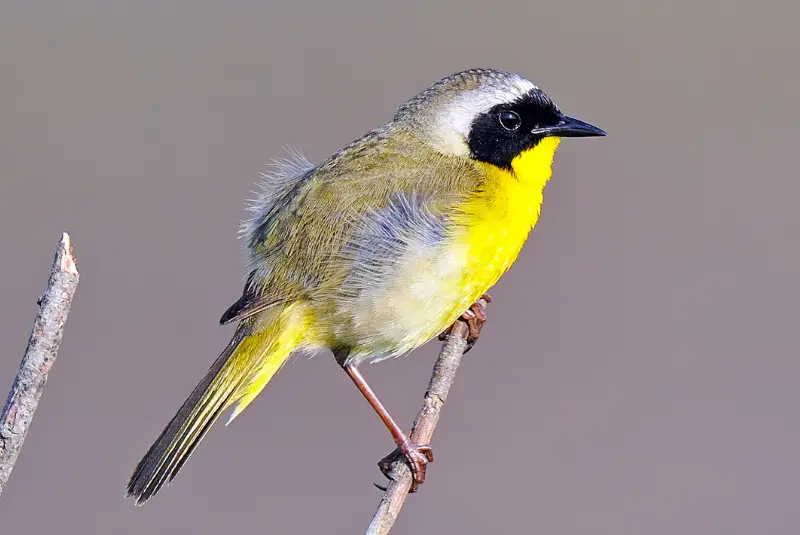
Common Yellowthroats are small songbirds with a brightly colored plumage. Adult males have a vivid yellow throat and breast, as well as a broad black mask that covers the forehead and cheeks.
Their black face mask is bordered on top by a grayish white band, which transitions into the olive brown nape and back. Females are similar, but lack the black face mask.
This warbler breeds in a small area of eastern Colorado, and is also a visitor in the rest of the state during fall migration.
The Common Yellowthroat is a migratory bird that spends the winter in the southern United States and Central America. It prefers shrubland and grassy habitats, and feeds on insects and other invertebrates.
Yellow-breasted Chat
Scientific name: Icteria virens

These birds are between the size of a sparrow and a robin. They are an olive-green color with a bright yellow breast, a gray face, and a distinct white eyebrow stripe.
In Colorado, Yellow-breasted Chats are present as breeding birds during the months of May through August.
They can usually be found in dense areas such as thickets, bramble bushes, shrubs, and along streams.
The diet of this bird consists of small insects, such as moths, beetles, ants, and grasshoppers. They also eat berries such as wild grapes and elderberries.
Western Meadowlark
Scientific name: Sturnella neglecta
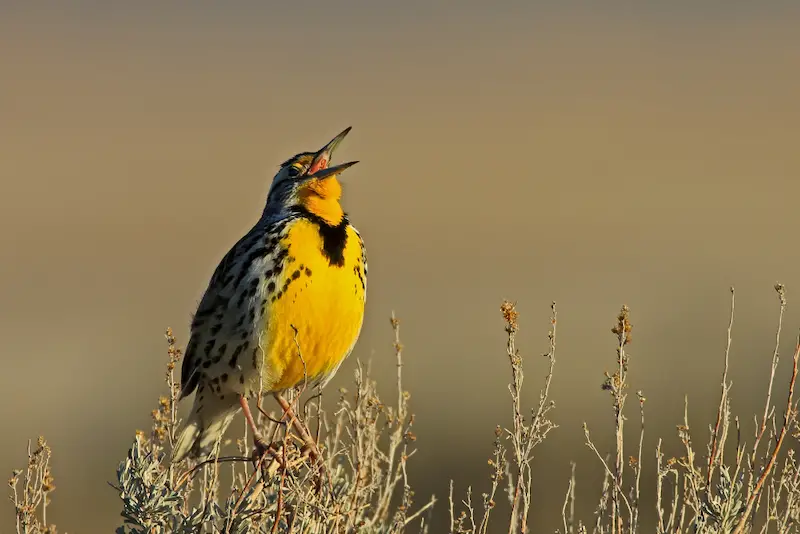
The Western Meadowlark closely resembles the Eastern Meadowlark, but is found in more western areas of North America. It occurs throughout Colorado as a breeding bird.
Male Western Meadowlarks have an underside that is yellow with a black necklace across the upper chest.
Although the two meadowlark species closely resemble each other, and their ranges overlap considerably, they almost never form hybrids.
This species is a favorite among birdwatchers, due to the fact that the male likes to sing loudly from a conspicuous perch, or while flying over its territory.
Combined with its striking black and yellow coloration, this makes the Western Meadowlark a pure joy to observe.
The very distinct songs of the two species of meadowlark allow for easy differentiation between them.
Hepatic Tanager (Female)
Scientific name: Piranga flava
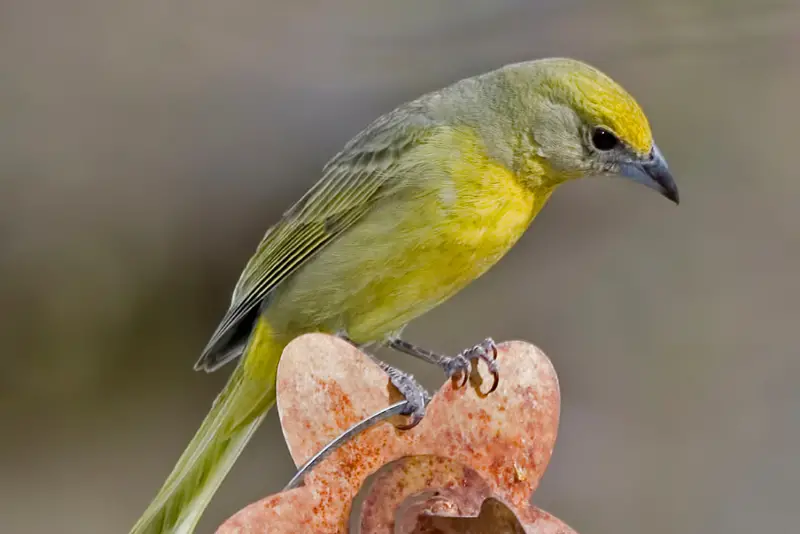
The Hepatic Tanager is a stunningly beautiful songbird of North America.
While adult male Summer Tanagers are entirely bright red Colorado birds, females and immatures are buff yellow, although they sometimes have a few patches of orange.
It can be hard to observe Hepatic Tanagers, since they like to forage high in the treetops of deciduous and mixed forests.
The Hepatic Tanager is a scarce summer visitor in Colorado, and can be seen here from May through August.
These birds migrate, and leave Colorado in the fall to spend the cold season in Mexico and Central America.
Western Tanager (Female)
Scientific name: Piranga ludoviciana
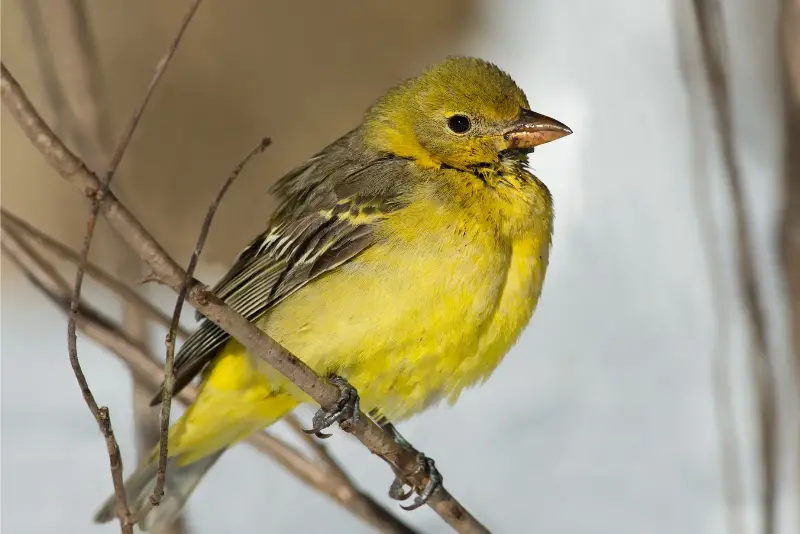
With its brilliant hues, male Western Tanagers are difficult to overlook.
Adult males have a black back, tail, and wings in the summer, with two yellow and white wingbars. Their bodies are yellow, while their head and throat are orange-red.
Females and juvenile birds have a similar appearance, but the yellow is duller and the red color is almost absent, with the exception of a speck near the base of the beak.
The Western Tanager may be seen in western Colorado during the breeding season from May to August. These exotically colored birds spend the remainder of the year in Central America.
Nashville Warbler
Scientific name: Oreothlypis ruficapilla
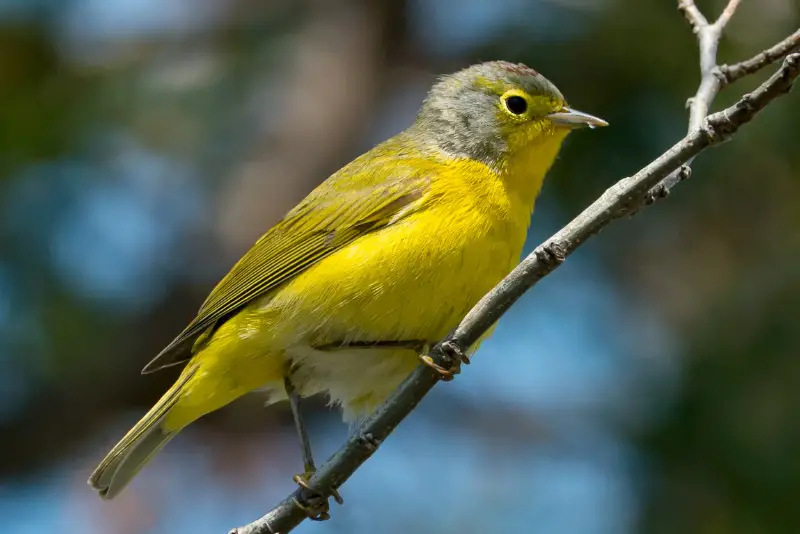
The Nashville Warbler is a beautiful little songbird. Adult males have an olive gray back, a blue gray head, and lemon yellow belly.
Females and juvenile birds are similar to males, but slightly paler and less colorful.
The Nashville Warbler is not a breeding bird in Colorado, but is commonly encountered in the state as a migratory bird during spring and fall.
Similar to many other warblers, it migrates to Central America in order to spend the winter. It favors the tangled undergrowth of mixed forests.
Yellow-headed Blackbird
Scientific name: Xanthocephalus xanthocephalus
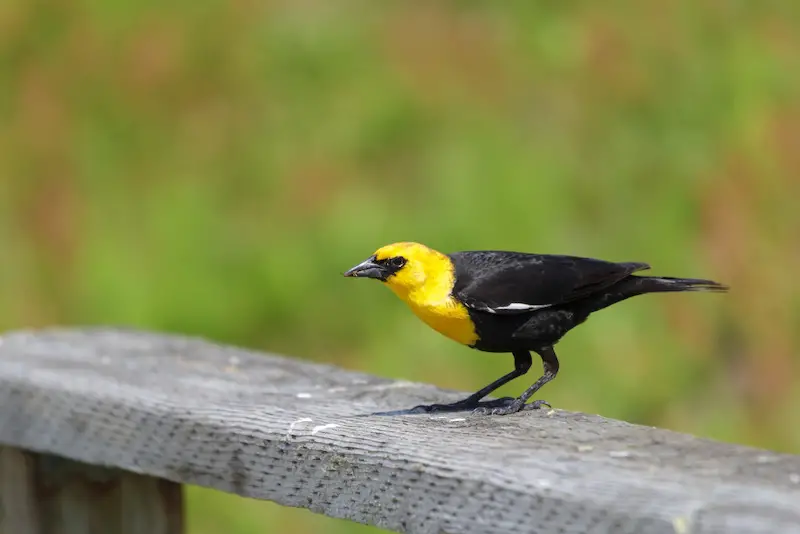
Yellow-headed Blackbirds can be found breeding in a few areas in northern Colorado, but are also present throughout the state during migration.
Adult males stand out thanks to their distinctive bright yellow head and chest, paired with a mostly black body.
Females and immatures of this blackbird have more drab coloration and are dark brown rather than black.
Males will often mate with a number of different females during the breeding season, forming small colonies of nests.
Outside of the breeding season, these blackbirds gather into massive flocks, frequently mingling with other species of blackbirds, and feed on leftover grains on farmland.
At this time it is common for this blackbird to forage in fields and spend their winters in open cultivated areas.
During the summer months, they feed mostly on insects and other small invertebrates.
Typically, these birds breed in lowland areas with wetlands and dense growth of cattails. This Colorado blackbird is most often observed during migration in fall and spring.
Townsend’s Warbler
Scientific name: Setophaga townsendi
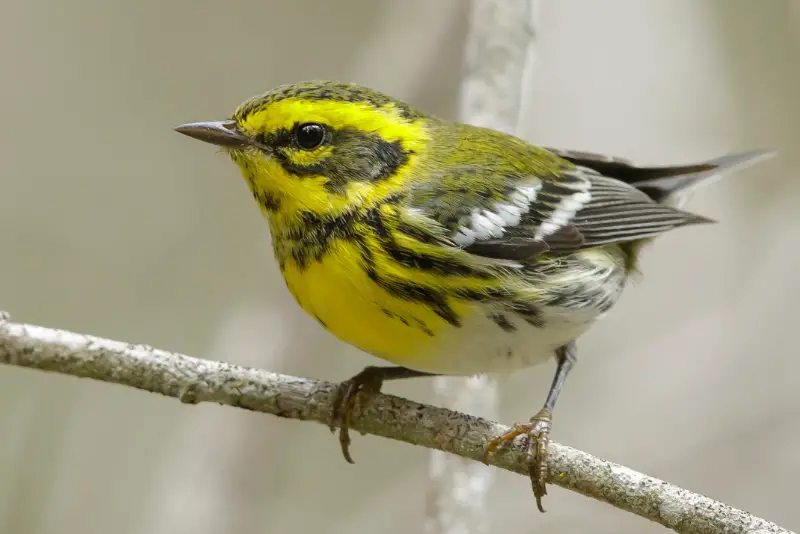
The Townsend’s Warbler is a beautiful small songbird.
Adult males have contrasting patches of bright lemon yellow and black on their heads, as well as a black chest and yellow underparts with dark streaks.
Females look similar to males, except they are often lighter in color, and the black portions of the head markings have been replaced with dark gray.
This is a breeding bird of the Pacific Northwest, and occurs in Colorado during spring and fall migration.
American Redstart (Female)
Scientific name: Setophaga ruticilla

While male American Redstarts are bright orange and black, females have yellow plumage instead of the orange parts of the male.
Females also have much less black, and as a result look like pale green birds with bright yellow patches.
This bird is a breeding bird in the northeastern part of Colorado from May through August, and favors a wide variety of woodland habitats, as well as backyards.
It migrates to South America to spend the winter months.
Cedar Waxwing
Scientific name: Bombycilla cedrorum
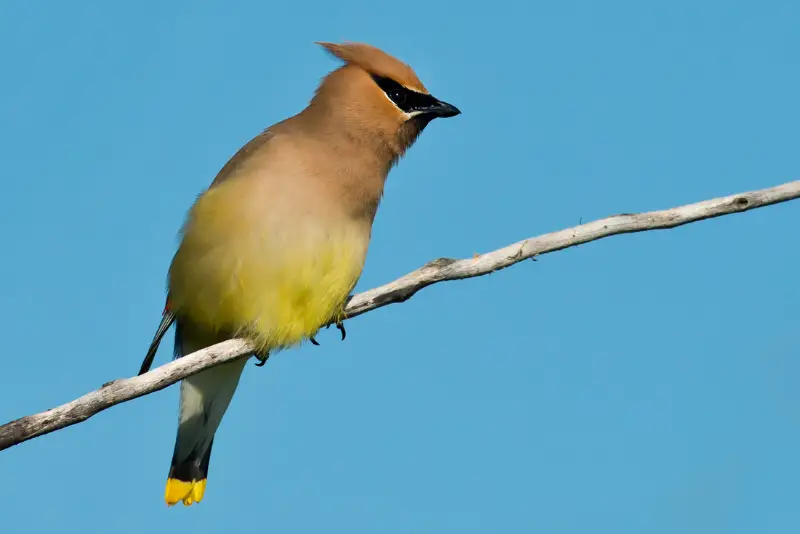
Adult Cedar Waxwings have orange buff colors that fade into pale yellow on the underparts. There is a crest on the head, as well as a dark mask around the eyes. Both sexes look similar.
This bird is a breeding bird and year-round resident in northern Colorado, as well as an irregular winter visitor during the rest of the state.
During harsh winters its numbers go up in the Centennial State due to northern birds that move south to escape the harsh climate.
During the cold months, these birds form small flocks that are nomadic, and wander around in search of areas with most food, such as berry bushes.
Orange-crowned Warbler
Scientific name: Oreothlypis celata
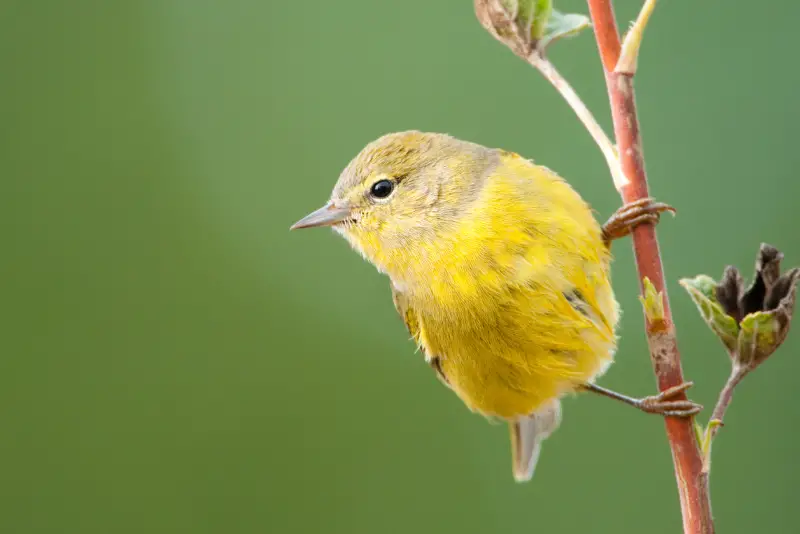
The orange crown on the head of the Orange-crowned Warbler is difficult to notice and is therefore not a helpful field trait to use for its identification.
Adult males are greenish yellow in color, with the upper portions a somewhat deeper shade than the lower bellies. They have a yellow-buff undertail and faint stripes on the underparts.
Adult females and juveniles have less vibrant colors than males, and are more grayish yellow tones.
The Orange-crowned Warbler is a breeding bird in western Colorado, and migratory visitor in the rest of the state during spring and fall.
Western Kingbird
Scientific name: Tyrannus verticalis
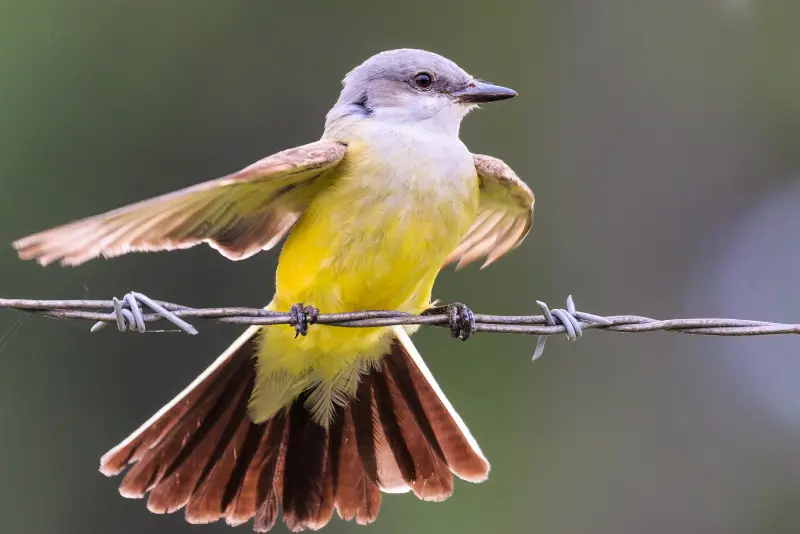
The Western Kingbird has a yellow underside, paired with pale gray upperparts, with both sexes looking similar.
Adults have a head that is mostly a light gray color, with a thin black line that runs through each eye.
The feathers of their dark brown wings have light colored edges, as do the tail feathers. Young birds resemble adults but are paler.
Western Kingbirds are summer visitors that breed throughout Colorado, and can be seen from April through August. They winter in Central America.
The preferred habitat of this bird is farmland and open country mixed with woodlands.
Scott’s Oriole
Scientific name: Icterus parisorum
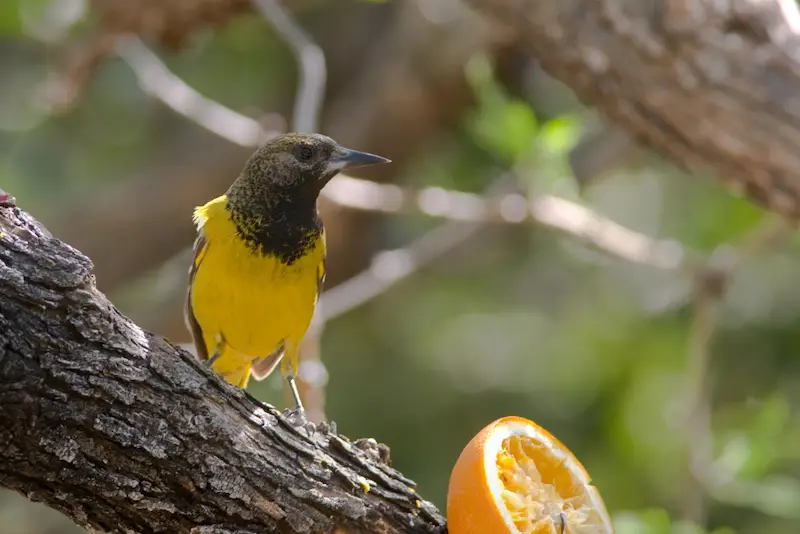
Scott’s Oriole is found in the southwestern part of the United States, and is a locally common breeding bird in western Colorado.
Scott’s Oriole is a medium-sized bird that is highly conspicuous due to its flaming yellow underside.
However, only the lower part of this bird is yellow in color. The head, back, breast, tail, and wing of the bird are a stunning jet black color.
A type of iceterid, it is most famously known as the desert or mountain oriole, as it prefers to live in high desert regions or along mountain slopes in Central Mexico and the southern United States.
It frequents both dense oak forests as well as more open landscapes with scattered trees and yucca plants.
The favorite food of this oriole is yucca nectar, and as a result of this, they are on occasion observed at Colorado feeders that offer nectar or sugar water.
Orchard Oriole (Female)
Scientific name: Icterus spurius

This Oriole got its name from its preference for orchards and open woods, and is a summer visitor in eastern Colorado.
While male Orchard Orioles are a dark orange color, the females are buff yellow with brown wings and an orange tinge on the chest.
Young males resemble females in color, and gradually become more and more black over their first two years.
Early in the summer, the Orchard Oriole feeds on insects, but later it will switch to eating wild fruit as they become mature.
After their young have fledged, parent Orioles will bring them to feeding stations (especially if you have a nectar feeder.
Some people mistakenly believe that the Orioles have departed since they do not see them at their feeders very often during the peak of the summer.
However, the birds are still present nearby, but are simply focused on catching insects to bring back to their nestlings.
The Orchard Oriole is one of the birds that gets here very late in the spring and is one of the ones that leaves quite early in the fall.
Evening Grosbeak
Scientific name: Coccothraustes vespertinus
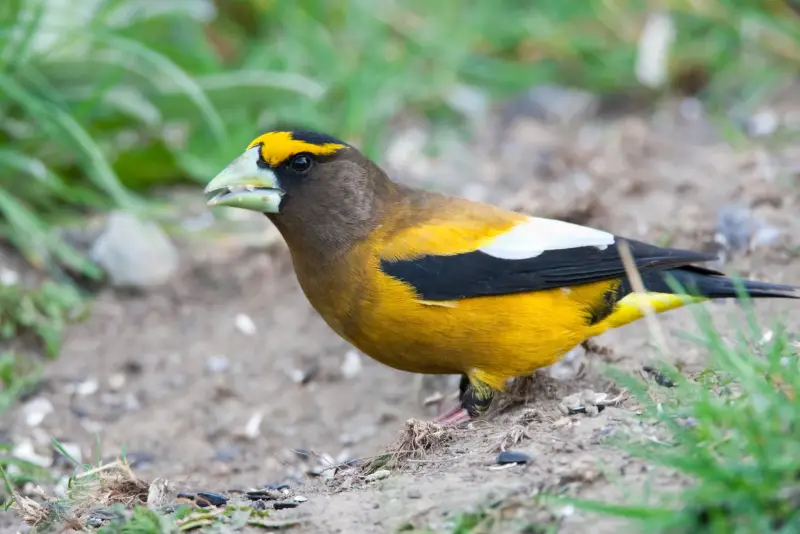
The Evening Grosbeak is a large finch with a massive yellow bill that makes it easy to recognize.
Adult males have a bright yellow forehead, mantle, and golden underparts. Females and immatures are mostly buff gray with yellow on the belly.
The Evening Grosbeak is a scarce breeding bird and irregular winter visitor in Colorado.
These yellow birds form flocks in winter, and sometimes visit Colorado bird feeders during the cold months.
MacGillivray’s Warbler
Scientific name: Geothlypis tolmiei

MacGillivray’s Warblers look similar to Mourning Warblers, but are a species of higher altitudes. Adult males have a blue-gray hood that contrasts with bright yellow underparts.
Females and juveniles are paler, and have a pale gray hood. These birds are present in western Colorado during the summer months from June through August.
It favors forests with dense undergrowth, and winters in Central America.
What Colorado birds are yellow and black?
The following 6 types of birds in Colorado are yellow and black:
- Lesser Goldfinch
- American Goldfinch
- Yellow-headed Blackbird
- Western Meadowlark
- Common Yellowthroat
- Wilson’s Warbler
As you can see, there are many yellow and black birds in Colorado.
The most common of these are Lesser Goldfinches, which are widespread breeding birds throughout Colorado and year-round residents in the southern half of the state.
So if you spot a black and yellow bird while bird watching, this is the first species that you should check for.
If you’re not sure which one of these birds you saw, check out our detailed description and ID photos above.
What small Colorado birds are yellow?
The most common small yellow birds in the Centennial State are Lesser Goldfinches, which are widespread breeding birds in grassland and urban areas.
Apart from these small finches, the smallest yellow birds in the state are warblers. There are no less than 7 types of yellow warblers in Colorado, of which the most common one is the Yellow Warbler.
If you’re not sure which one of these birds you saw, check out our detailed descriptions and ID photos above.
If you enjoyed this article, check out our guide to the raptors of Colorado.

